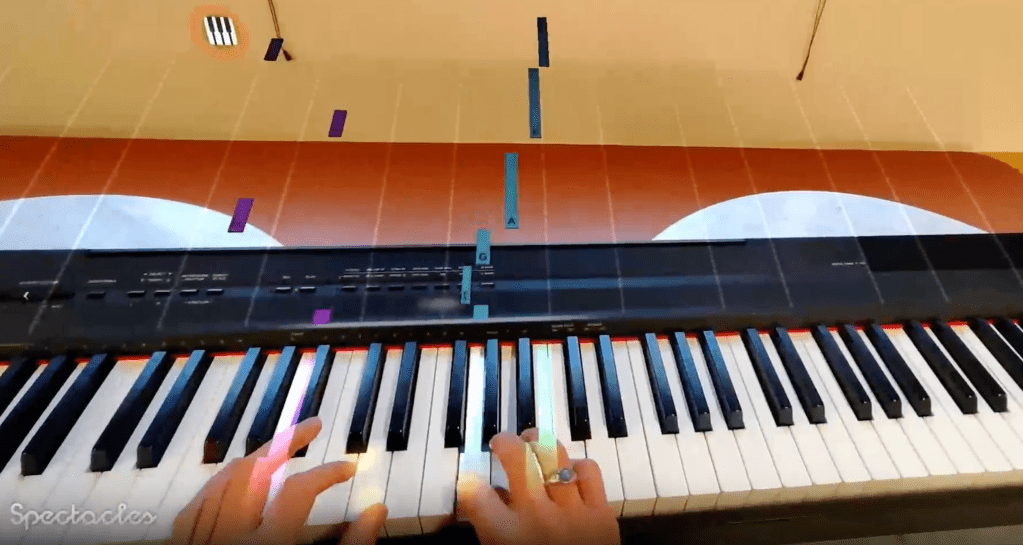In September, Snapchat introduced an upgraded version of Spectacles, offering a glimpse into the future with augmented reality eyewear. I had the chance to experience them earlier this week, and I must say, they are quite remarkable. While they’re not without flaws, they are definitely impressive.
Quick overview
Firstly, it’s important to note that Spectacles aren’t a consumer product available for direct purchase, nor will they be in the near future. They are aimed at developers who wish to create applications for Snapchat’s new AR platform, Snap OS.
To acquire them as a developer, joining Snapchat’s developer program for $99 per month is necessary, with a commitment of at least one year. Thus far, they’re not exactly an easily accessible product. Nonetheless, trying them out left me wishing for a pair.
Despite sharing the “Spectacles” name with Snapchat’s previous camera glasses, it’s essential to highlight that these are fundamentally different. These are true augmented reality glasses, featuring displays that project digital content over the real world.
They do include cameras for capturing content, akin to the earlier Spectacles, but the new edition offers a far richer experience, transcending its predecessor.

Shared experiences
During my time with the Spectacles, I explored a variety of experiences, such as drawing in the air with my finger, creating virtual forests, playing chess, making video calls, and participating in piano lessons.
The first two experiences felt somewhat gimmicky and I doubt I’d use them regularly. The drawing feature might be more engaging if used on a fixed canvas. However, I found chess to be incredibly engaging. I likely spent half of my demo time engrossed in a chess match with a Snap OS developer present.
Some experiences on Snap OS enable interaction with another Spectacles user, which made the chess match particularly enjoyable.
Sitting across from each other, we played on a virtual chess board hovering in space. The tracking of hand movements was impressively accurate. I found myself more captivated by the innovation rather than focusing on actual gameplay, leading to my defeat. But that’s beside the point.
More to do in Snap OS
The other experiences I mentioned included video calling and piano lessons. Video calling was fairly straightforward, though it doesn’t recreate your face or track expressions like on the Apple Vision Pro. The current focus is on sharing your perspective through the outward-facing cameras, which has its own unique advantages.
This approach isn’t necessarily a downside and could open up interesting possibilities. It’s important to remember that Spectacles are designed for outdoor use; thus, sharing a rear viewpoint makes sense, especially compared to the primarily home-use Vision Pro.
A standout feature was the piano lessons. This lens was introduced just days before my demo, making me one of the early users. Although it wasn’t the most enjoyable activity, it was undoubtedly the most technically impressive.
Essentially, it can track the keys on any piano and overlay the necessary notes for each song as it’s being played, enabling anyone to perform without prior experience. If you can quickly adapt to pressing the highlighted keys on both sides of the keyboard, it’s quite manageable.
While I struggled to master this in my few minutes, my colleague Fernando managed to play a couple of songs quite accurately. It’s a fascinating idea.

Form factor
The new Spectacles from Snapchat weigh approximately 226 grams. Despite their bulkier appearance, they feel lightweight compared to mixed reality headsets. All technology is integrated into the frames, eliminating the need for external computing units or batteries – they are genuinely all-in-one.
While it’s tempting to compare these to Meta’s Orion glasses, which appear sleeker and more stylish, the difference is notable. Personally, I might prefer the Orion’s thinner profile, but price points for both remain unknown.
Nevertheless, this should not diminish the significance of Snapchat’s new Spectacles. They may not boast the most appealing design, but they are functional and accessible to developers — a feat Meta’s AR glasses cannot claim.
Displays
Moving on to the crucial aspect of AR glasses — the displays. The latest Spectacles utilize Liquid Crystal on Silicon (LCoS) micro-projectors, which Snap claims produce “vivid, sharp images.” This is undoubtedly one of the standout features of the Spectacles. While I wouldn’t label it as high resolution, it is certainly above low resolution, with everything appearing crisp.
The displays can reach notable brightness levels, potentially too bright for indoor use. I was surprised by how illuminating they could be, which is an advantage for outdoor activities. There’s also a tint option to help filter light, akin to sunglasses.
A downside, however, is the limited field of view, reported by Snap to be 46 degrees. You can definitely perceive where the displays end, especially when engaging with the home interface while moving your head around.
While I can’t assert that this can be remedied in AR glasses, given the constraints of flat displays integrated into eyewear, it’s a noteworthy observation.

Final thoughts
Beyond the experiences mentioned earlier, there’s not a lot to elaborate on regarding the software. Interacting with the UI involves a few quick hand gestures, like looking at your hand to exit apps or return to the home screen. When the interface appears in your left hand, you can “physically” press buttons with your right hand.
The system facilitates basic hand tracking with a cursor, similar to the Meta Quest. However, there’s no eye tracking as seen in Apple Vision Pro.
In summary, the experience was excellent, though it clearly has room for improvement. Snap’s latest Spectacles offer a glimpse into the future, and I’m genuinely astonished that standalone AR glasses are being developed to this extent in 2024. I eagerly anticipate advancements in this technology over the next few years.
What are your thoughts on Snap’s new Spectacles? We’d love to hear from you in the comments.
Follow StrongChimp: X/Twitter, Bluesky, Instagram
: . More.



